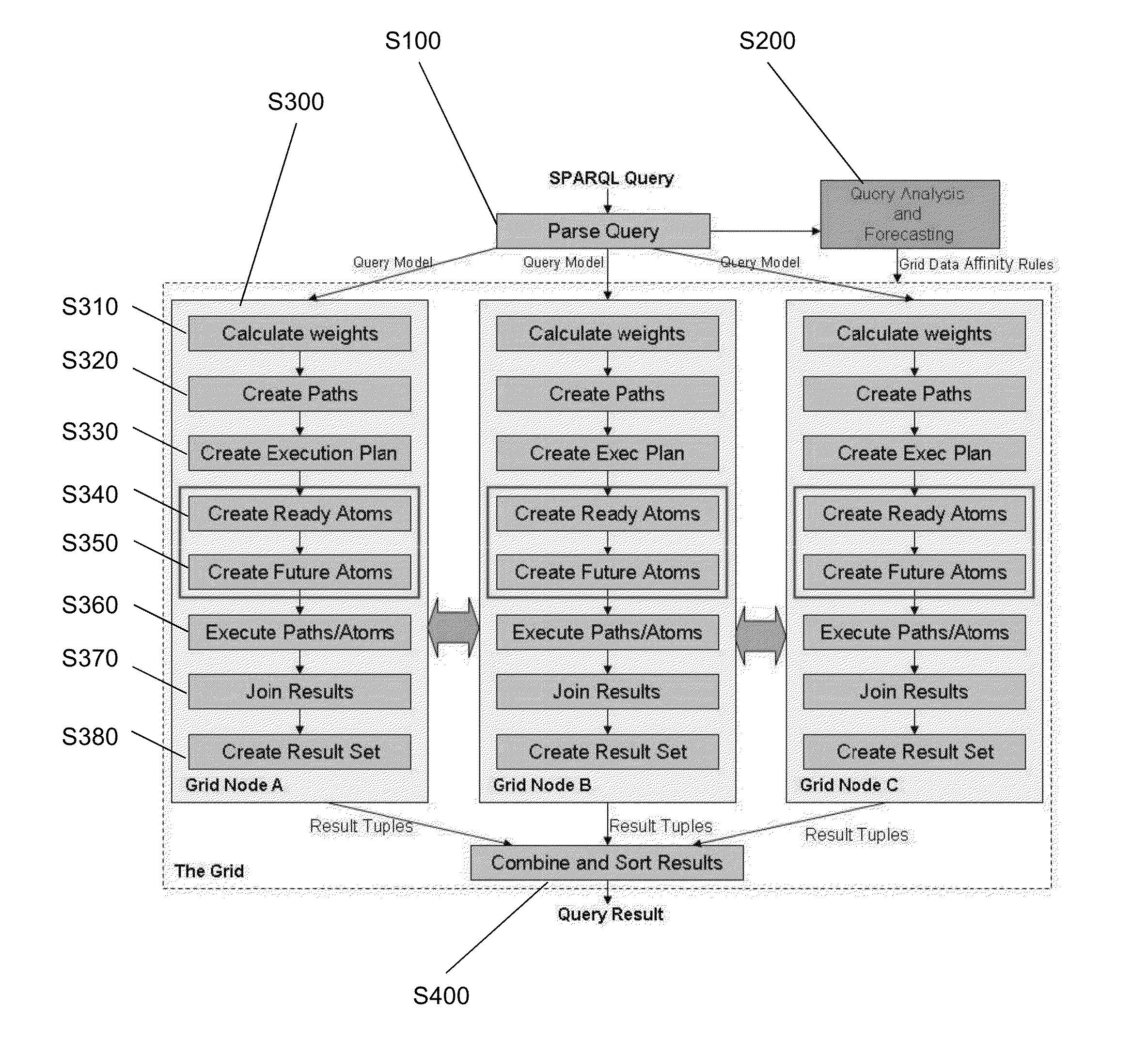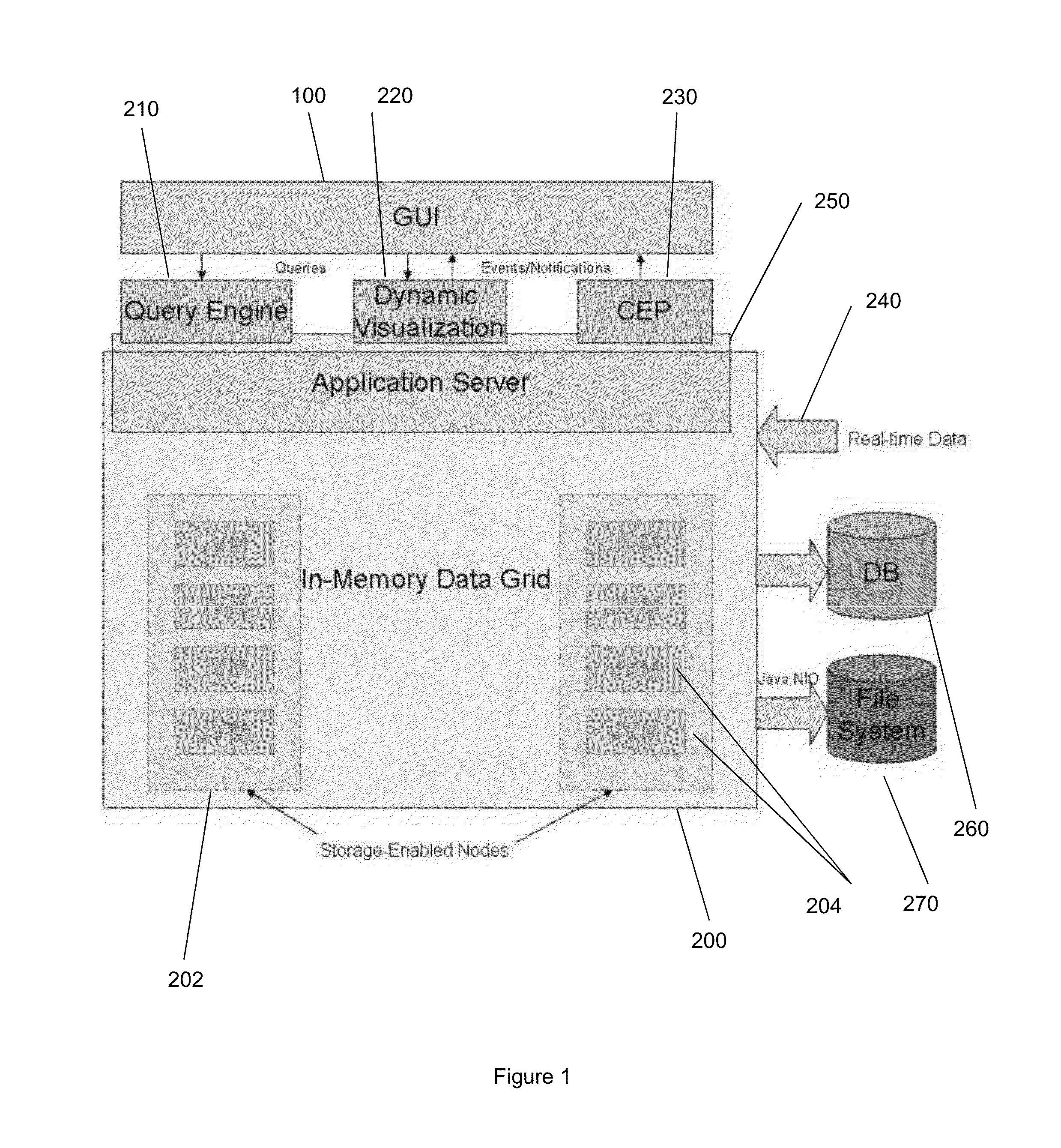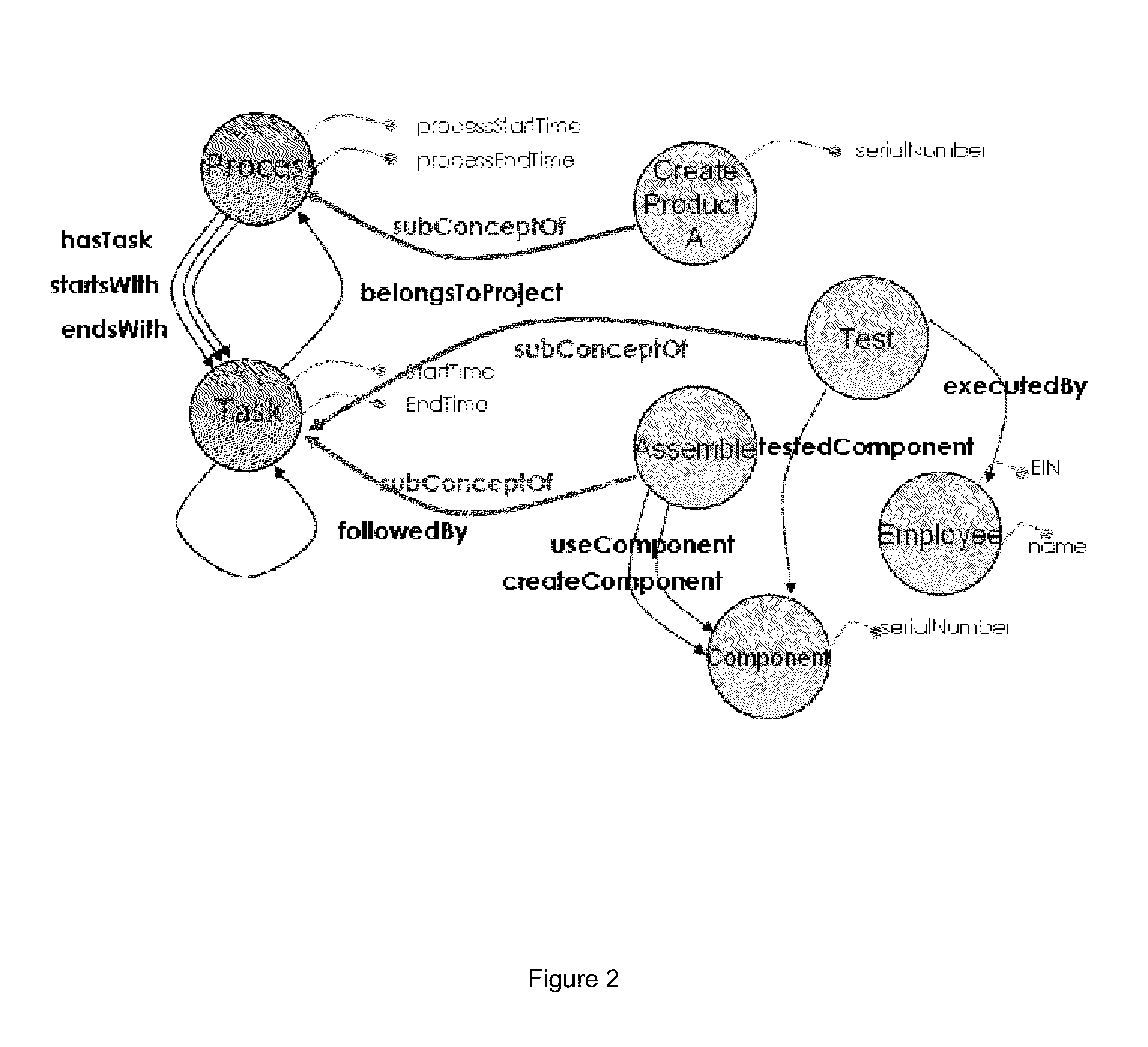Method and system for processing data queries
a data query and data technology, applied in the field of methods and systems for processing data queries, can solve the problems of limiting the kind of data, restricting the data model itself, and existing bpm systems that fail to meet their promis
- Summary
- Abstract
- Description
- Claims
- Application Information
AI Technical Summary
Benefits of technology
Problems solved by technology
Method used
Image
Examples
Embodiment Construction
[0050]Aspects of the present invention seek to provide methods and systems for processing queries on data sets.
[0051]The aspects of the present invention seek to provide methods and systems which are flexible and scalable with regards to data collection and analysis. The aspects of the present invention also seek to provide methods and systems which reduce latency and improve search performance.
[0052]Aspects of the invention seek to provide a data storage and analysis system to support scalable monitoring and analysis of business processes along multiple configurable perspectives and levels of granularity. Preferably they also provide for analysis of data from processes that have been already executed and from on-going processes, as a continuous flow of information.
[0053]With respect to the classical business process mining tools, the focus of the aspects of the invention is on the efficient and scalable analysis of process flow, for example expressed in the flexible and expressive ...
PUM
 Login to View More
Login to View More Abstract
Description
Claims
Application Information
 Login to View More
Login to View More - R&D
- Intellectual Property
- Life Sciences
- Materials
- Tech Scout
- Unparalleled Data Quality
- Higher Quality Content
- 60% Fewer Hallucinations
Browse by: Latest US Patents, China's latest patents, Technical Efficacy Thesaurus, Application Domain, Technology Topic, Popular Technical Reports.
© 2025 PatSnap. All rights reserved.Legal|Privacy policy|Modern Slavery Act Transparency Statement|Sitemap|About US| Contact US: help@patsnap.com



